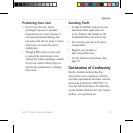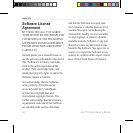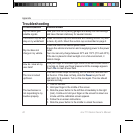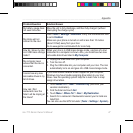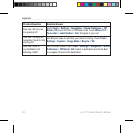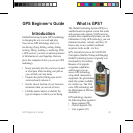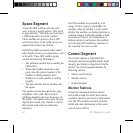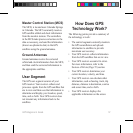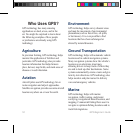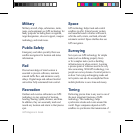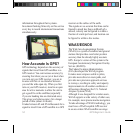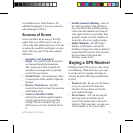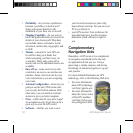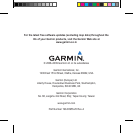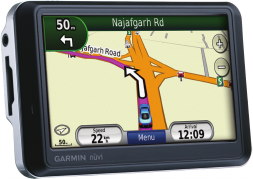
54 GPS Beginner’s Guide
information throughout their systems.
Investment banking rms rely on this service
every day to record international transactions
simultaneously.
How Accurate Is GPS?
GPS technology depends on the accuracy of
signals that travel from GPS satellites to a
GPS receiver. You can increase accuracy by
ensuring that when you use (or at least when
you turn on) your GPS receiver, you are in
an area with few or no obstacles between
you and the wide open sky. When you rst
turn on your GPS receiver, stand in an open
area for a few moments to allow the unit to
get a good x on the satellites (especially
if you are heading into an obstructed area).
This gives you better accuracy for a longer
period of time (about 4-6 hours).
It takes between 65 and 85 milliseconds for a
signal to travel from a GPS satellite to a GPS
receiver on the surface of the earth.
The signals are so accurate that time can be
gured to much less than a millionth of a
second, velocity can be gured to within a
fraction of a mile per hour, and location can
be gured to within a few metres.
WAAS/EGNOS
The Wide Area Augmentation System
(WAAS) is a system of satellites and ground
stations that provides even better position
accuracy than the already highly accurate
GPS. Europe’s version of this system is the
European Geostationary Navigation Overlay
Service (EGNOS).
The Federal Aviation Administration
(FAA) developed the WAAS program.
It makes more airspace usable to pilots,
provides more direct en route paths, and
provides new precision approach services
to runways, resulting in safety and capacity
improvements in all weather conditions at
all locations throughout the U.S. National
Airspace System (NAS).
Although it was designed for aviation users,
WAAS supports a wide variety of other uses,
for example, more precise marine navigation.
To take advantage of WAAS technology, you
must have a WAAS-capable GPS receiver
in an area where WAAS satellite coverage




